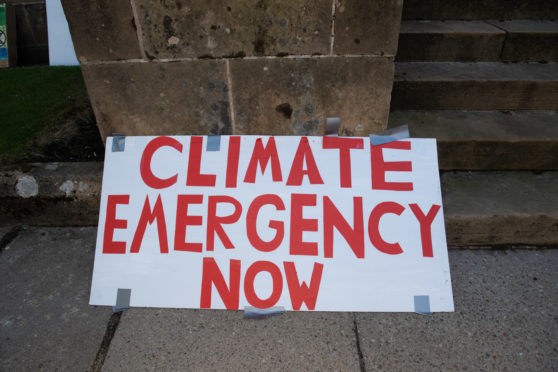Fife could soon be at the forefront of the global fight against climate change and coastal erosion after plans for a state-of-the-art facility were revealed.
The UK Government has pledged £300,000 to St Andrews University for a new Stretch Dome Simulator which will act as a test vehicle for research and innovation into climate change, coastal ecology, clean energy and low carbon.
It will give scientists the ability to test theories and generate solutions in rapid time, while also giving them the chance to demonstrate their work to a wider audience.
More details about the plans are expected to emerge over the coming months, but Alister Jack MP, secretary of state for Scotland, has written to Fife Council co-leaders David Ross and David Alexander confirming the UK Government’s intention to fund the project.
The Fife initiative is one of four to share in £3 million made available by the Ministry of Defence’s decision to retain the RM Condor site in Angus, which had previously been earmarked for housing.
University of St Andrews Quaestor Derek Watson said: “This is a welcome investment for the university and another example of our academics leading the way, in collaboration with others, to find solutions to both current and future global challenges.”
It is understood the university’s initial uses for the simulator will look at climate change and clean energy, but will also focus on areas such as food security, new advanced materials, marine mammals and underwater acoustics.
Announcing the funding, Mr Jack said he believes the cash will “strengthen the overall package of support” already in the pipeline through the wider £700 million Tay Cities Deal.
News of the development comes on the same day a new report suggests climate change is disrupting the rhythms of spring growing and river flooding across Europe, which could pose new problems for biodiversity and food security in floodplains.
Researchers from the University of Glasgow and Umeå University in Sweden, who performed a detailed analysis of data collected since the 1960s on flood peaks and daily temperature in locations across Europe, found the thermal growing season – defined as periods where the temperature rose consistently above 5°C, encouraging plants and trees to begin to grow – has been consistently starting earlier in the year.
That brings it closer to the periods where the highest river floods occur, which have begun to happen later in the year in Central and Eastern Europe.
The paper’s lead author Dr Thorsten Balke, of the University of Glasgow’s School of Geographical and Earth Sciences, said: “The changes we’re seeing are actually quite drastic – there’s a clear pattern of flooding occurring more regularly in the growing season.
“That raises a lot of questions about the effect that might have on the European landscape.
“There’s a lot of interaction between the rocks and soil and sediment on the banks of rivers and the trees and plants which grow there, which plays into how floods are controlled and the effect they have on the landscape around them.”
The researchers plan to continue to monitor the effects of climate change on flooding across Europe, also in coastal areas, with further direct field studies underway to collect additional data.
The research was supported by funding from the Carnegie Trust, the Swedish Environmental Protection Agency and the Swedish Research Council Formas.










